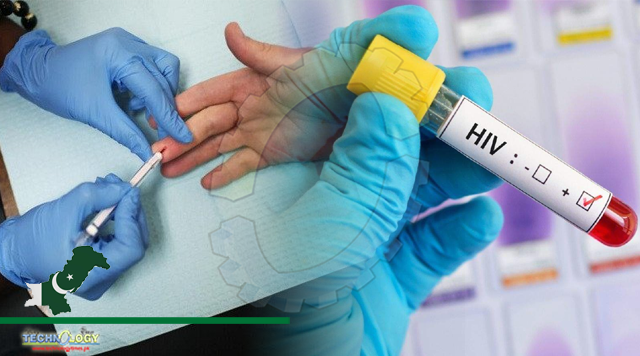More than four decades after the first cases of Human Immunodeficiency Virus (HIV) surfaced, patients living with the disease still struggle against stigma, discrimination, and negative labeling in their own families and communities.

By Wisal Yousafzai
Shazia Bibi, who receives treatment at the Family Care Centre of Hayatabad Medical Complex, is one of them. Her ordeal began twenty-four months ago when she contracted the virus from her HIV-positive husband, who is also a drug addict.
The 28-year-old mother of three laments about the long journey to the provincial capital during strict Covid-19 lockdowns for her treatment. “For women, it’s difficult to spend life with Human Immunodeficiency Virus as the stigma of the disease along with cultural barriers is still prevalent in rural areas.”
Six months pregnant and already worried for her unborn baby, Shazia said: “There is a dire need for awareness regarding Human Immunodeficiency Virus .” She blamed men in the area for transmitting the virus to their wives. “Drug addicts bring this disease home.”
Her troubles arising from HIV-related stigma also include a mother-in-law who refuses to eat what she cooks due to fear of contracting the disease.
According to the Integrated HIV, Hepatitis and Thalassemia Control Program, Shazia shares the predicament with 5,634 registered patients of Human Immunodeficiency Virus in Khyber-Pakhtunkhwa (K-P). More than 4,000 of these patients are male, 1,321 are women, while 241 are children. The registered patients hail from different parts of the province.
Talking to The Express Tribune, Dr Muhammad Khalil Akhter, who heads the Integrated Program for HIV, Hepatitis, and Thalassemia, said that K-P has six treatment centres: Hayatabad Medical Complex, Lady Reading Hospital, DHQ Teaching Hospital Kohat, DHQ Dera Ismail Khan, MTI Gulnawaz Teaching Hospital Bannu, DHQ Hospital Batkhela, and DHQ Hospital D.I.Khan.
He added that due to the pandemic, the program is facing challenges in providing access to all patients. However, with the support of the National Aids Control Program, the registered patients were being sent their medicines through courier service.
“Cases among men, members of the transgender community, sex workers, and use of contaminated syringes are the main causes of spreading HIV among the community,” said Dr Akhtar. He said that the program is working on awareness campaigns to eliminate the negative propaganda against HIV patients and help them reenter society.
According to scientific evidence, HIV develops when individuals expose themselves to infected blood, semen, or vaginal fluids. If left untreated, the virus develops into AIDS. HIV/AIDS is not a singular disease as commonly presumed.
HIV is an infection, whereas Aids is a condition. People are known to live long, healthy lives with HIV if they do not develop Aids. The World Health Organisation says, more than 38 million individuals live with HIV/AIDS globally, out of which 1.8 million are children below 15 years of age.
The prevalent stigma attached to HIV in Pakistan may be due to the relatively low number of reported cases. A National Health Survey (NHS) report estimates just 150,000 patients across the country. More than 70,000 of the patients are from Punjab, while 15,000 are from K-P and Balochistan.
Overall progress in HIV prevention efforts in Pakistan remains variable. Health experts say the country is far from meeting the 2020 targets committed at the United Nations meeting on ending Aids five years ago. Since then, the Global HIV Coalition Prevention report states that HIV cases in Pakistan have increased by 74%.
Originally published at The express tribune